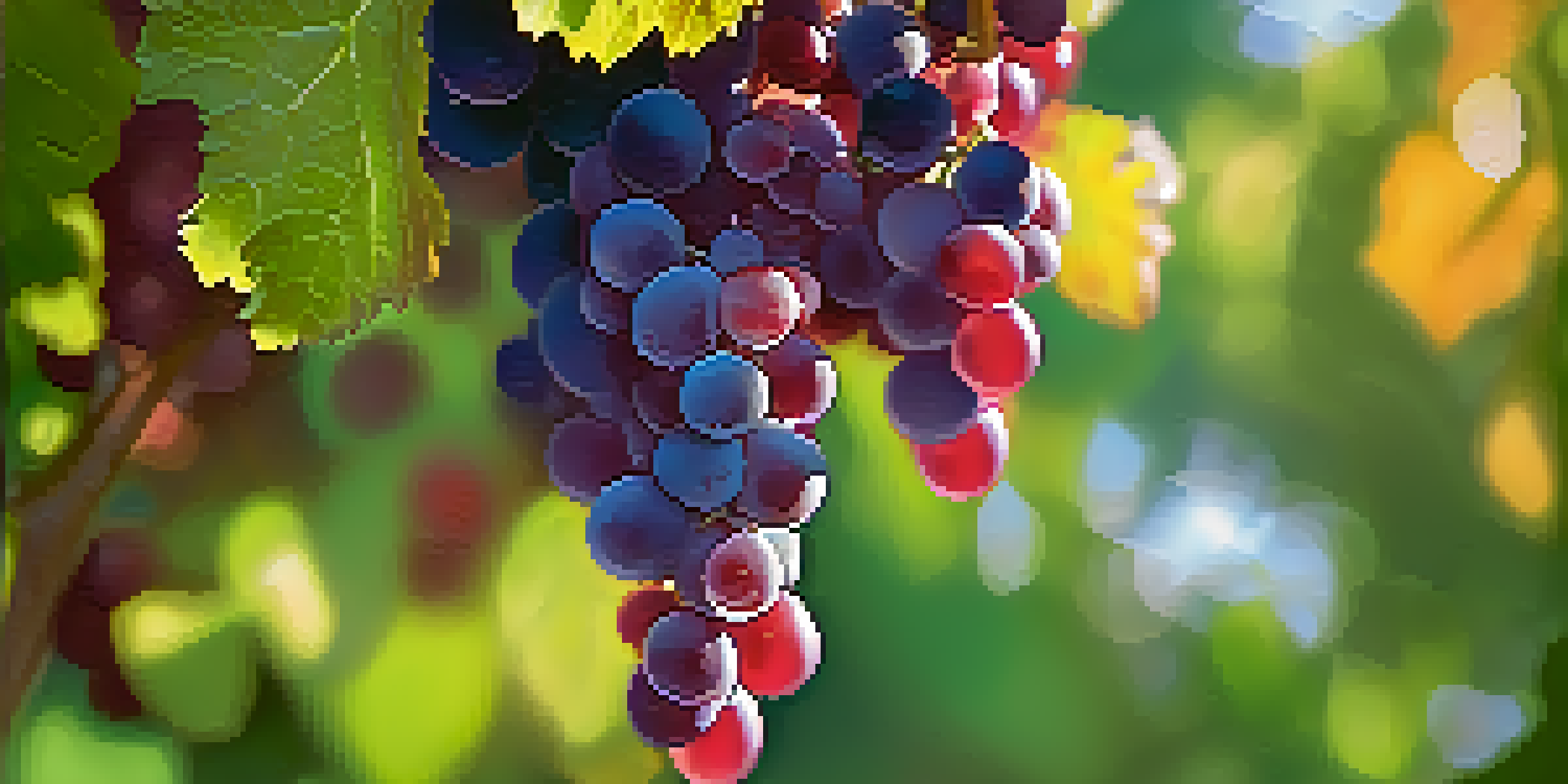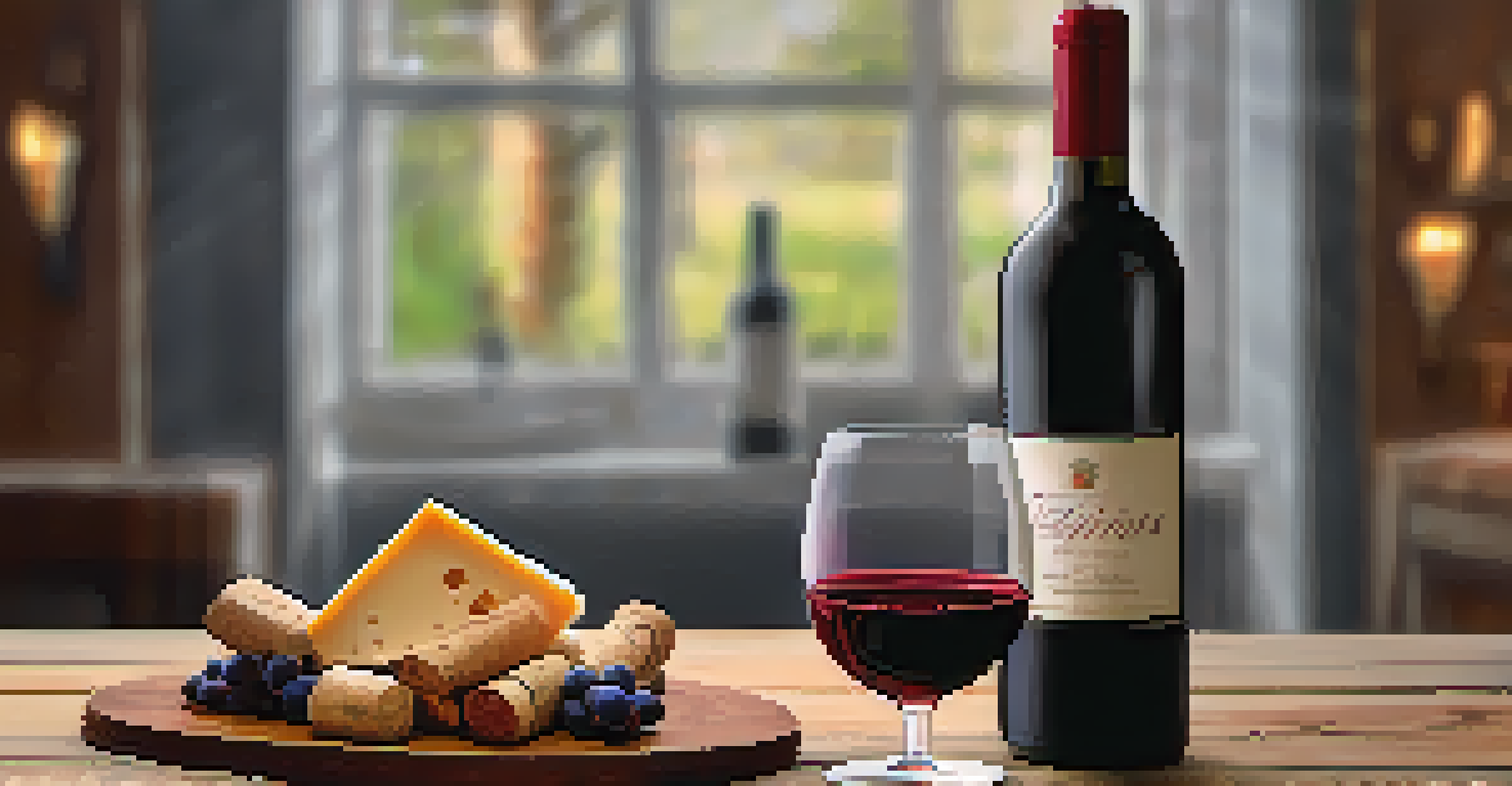Tasting Tempranillo: A Journey Through Spanish Wine Regions

What is Tempranillo? An Introduction to the Grape
Tempranillo is a versatile red grape variety that plays a starring role in Spanish wines. Known for its rich flavors and smooth textures, Tempranillo's name is derived from 'temprano,' meaning early, indicating its early ripening. This grape forms the backbone of many renowned Spanish reds, offering notes of cherry, plum, and sometimes a hint of leather or tobacco. Its adaptability allows it to thrive in various climates, contributing to the unique character of wines across different regions.
Wine is sunlight, held together by water.
When tasting Tempranillo, you might notice its deep ruby color, hinting at the bold flavors inside. The grape's profile can vary significantly based on where it’s grown and how it’s vinified. For instance, wines from the Rioja region often exhibit a more complex, oaky flavor due to aging in American oak barrels. In contrast, those from Ribera del Duero might lean towards a bolder, fruit-forward profile.
Understanding Tempranillo is the first step in appreciating the diverse offerings of Spanish wines. Whether you're a novice or a seasoned wine enthusiast, exploring this grape invites you on a flavorful adventure through Spain’s wine regions. Let’s embark on this journey and discover what each area contributes to the overall tapestry of Tempranillo.
A Closer Look at Rioja: The Heart of Tempranillo
Rioja is perhaps the most famous wine region in Spain, celebrated for its exceptional Tempranillo wines. This area, nestled in northern Spain, offers a unique climate ideal for grape cultivation, combining Mediterranean and Atlantic influences. The region is often associated with traditional wine-making methods, particularly the use of oak barrels, which impart distinctive flavors and aromas to the wine.

In Rioja, you’ll find three main sub-regions: Rioja Alta, Rioja Alavesa, and Rioja Baja, each contributing its own nuances to the Tempranillo character. For example, wines from Rioja Alta tend to be more elegant and nuanced, while those from Rioja Baja may be richer and fruitier. This diversity is a testament to the region's terroir, a French term that describes how the environment affects the taste of wine.
Tempranillo: Spain's Signature Grape
Tempranillo is a versatile red grape that forms the backbone of many renowned Spanish wines, showcasing rich flavors and adaptability across various regions.
When exploring Rioja Tempranillo, don’t miss out on the opportunity to taste aged varieties, often labeled as Crianza, Reserva, and Gran Reserva. These classifications indicate the aging process and can significantly influence the flavor profile, making for a delightful tasting experience. Whether enjoyed with tapas or a hearty meal, Rioja Tempranillo is a staple that never disappoints.
Ribera del Duero: Bold Flavors and Rich History
Ribera del Duero is another key player in the world of Tempranillo, known for producing some of Spain's most robust and full-bodied wines. Located along the banks of the Duero River, this region boasts a high altitude and a continental climate, which contribute to the intense flavor concentration in its grapes. The wines here often display dark fruit notes, coupled with a balanced acidity that makes them incredibly drinkable.
In wine, there is truth.
One of the fascinating aspects of Ribera del Duero is its history, which dates back to Roman times. However, it wasn't until the 1980s that the region gained international recognition, largely thanks to the efforts of innovative winemakers. Many of the wineries here now blend traditional practices with modern techniques, resulting in wines that are both timeless and contemporary.
When tasting Ribera del Duero Tempranillo, you might encounter labels like Tinto Fino, which is another name for the local variation of the grape. These wines often have a pronounced structure, making them perfect companions to grilled meats or rich stews. The depth of flavor and complexity found in Ribera del Duero wines make it a must-try for any Tempranillo enthusiast.
Priorat: The Rising Star of Spanish Wine
Although lesser-known, Priorat has emerged as a vibrant wine region in Spain, producing extraordinary Tempranillo wines alongside other varietals. Located in Catalonia, this region is famous for its steep slopes and unique slate soils, known as 'licorella,' which impart a minerality to the wines. The challenging growing conditions here often lead to lower yields but result in wines of remarkable intensity and character.
In Priorat, you’ll find a blend of Tempranillo with other grapes such as Garnacha (Grenache), creating complex blends that are rich and layered. The wines from this region are often bold, with dark fruit flavors and hints of spice, making them a delight for adventurous palates. The combination of the terroir and expert winemaking practices results in wines that are both powerful and elegant.
Rioja and Ribera del Duero's Diversity
The distinct characteristics of Tempranillo wines from Rioja and Ribera del Duero highlight the impact of terroir and winemaking techniques on flavor profiles.
Exploring Priorat wines allows you to taste the evolution of Spanish wine-making, where tradition meets innovation. Whether you enjoy them young or allow them to age gracefully, Priorat Tempranillo wines are sure to impress. Pair them with hearty dishes like lamb or mushroom risotto for a truly memorable dining experience.
Tempranillo in the Douro Valley: A Portuguese Perspective
While Spain is the home of Tempranillo, neighboring Portugal also plays a significant role in the story of this grape. In the Douro Valley, known primarily for its Port wine, Tempranillo is grown under the local name Tinta Roriz. The region’s unique terroir, with its steep terraces and schist soil, allows for the production of high-quality wines that reflect the landscape’s character.
Douro Valley wines often showcase ripe fruit flavors, with a touch of earthiness and spice. The combination of old vines and traditional winemaking techniques results in wines that are both complex and approachable. Many winemakers in this region are focusing on dry red wines made from Tinta Roriz, highlighting the grape’s versatility beyond its use in sweet Port.
When tasting Douro Valley Tempranillo, you might experience a different expression of the grape compared to its Spanish counterparts. These wines can be robust yet refined, making them a wonderful option for those looking to explore Tempranillo in a new context. Enjoy them with regional dishes like roasted meats or hearty stews for a harmonious pairing.
Food Pairings: Elevating Your Tempranillo Experience
Understanding how to pair food with Tempranillo can elevate your tasting experience to new heights. The grape's medium to full-bodied nature and balanced acidity make it incredibly versatile when it comes to food. Whether you’re enjoying a young, fruity Rioja or a rich Ribera del Duero, there’s a perfect dish to complement each style.
For lighter Tempranillo wines, consider pairing them with dishes like grilled vegetables or chicken. The fresh flavors will enhance the wine’s fruity notes, creating a delightful balance. On the other hand, bolder varieties, such as those from Ribera del Duero, pair beautifully with hearty meats, stews, or even aged cheeses, allowing the wine’s depth to shine through.
Innovations in Tempranillo Winemaking
The future of Tempranillo is bright as winemakers explore organic practices and innovative techniques to enhance the grape's quality and appeal.
Don’t hesitate to experiment with your pairings! The beauty of Tempranillo lies in its adaptability, so feel free to mix and match with your favorite dishes. Hosting a tasting party with various styles of Tempranillo and complementary foods can lead to delightful discoveries and conversations around the table.
The Future of Tempranillo: Trends and Innovations
As wine enthusiasts continue to explore Tempranillo, the future of this beloved grape looks bright. Winemakers are increasingly experimenting with different aging techniques, blending styles, and even sustainable practices to create wines that resonate with modern consumers. The focus on quality and innovation is ensuring that Tempranillo remains relevant in an ever-evolving industry.
One notable trend is the rise of organic and biodynamic wines, which are gaining traction among eco-conscious consumers. Many wineries are adopting these practices to enhance the terroir and produce wines that reflect the purity of the grape. This shift not only benefits the environment but also elevates the wine's quality, allowing the true essence of Tempranillo to shine through.

As you explore the world of Tempranillo, keep an eye out for these new and exciting developments. Whether it’s a small boutique winery or a larger established producer, the passion for crafting exceptional Tempranillo wines is evident. Embrace this journey and let the evolving landscape of Tempranillo surprise and delight you.